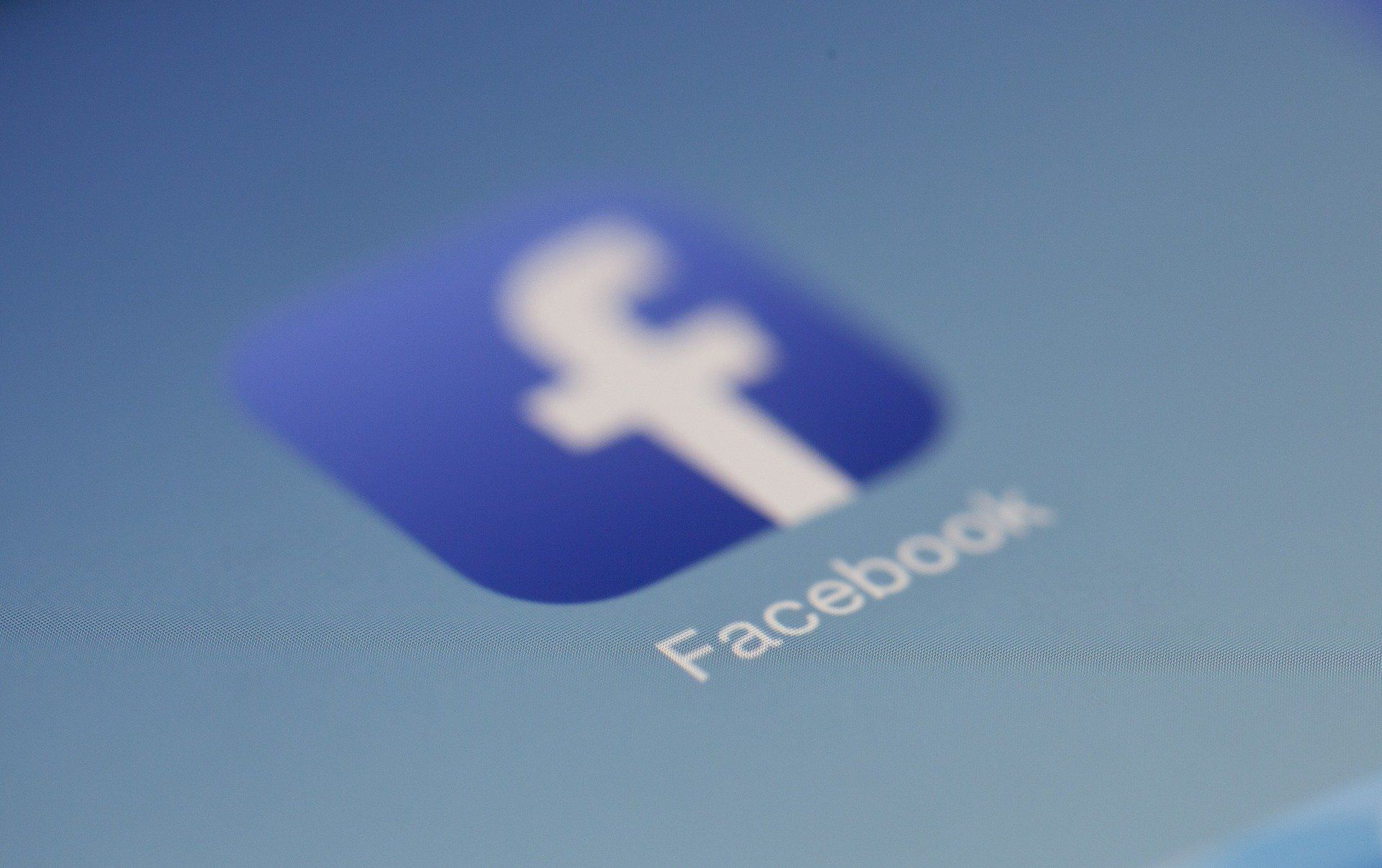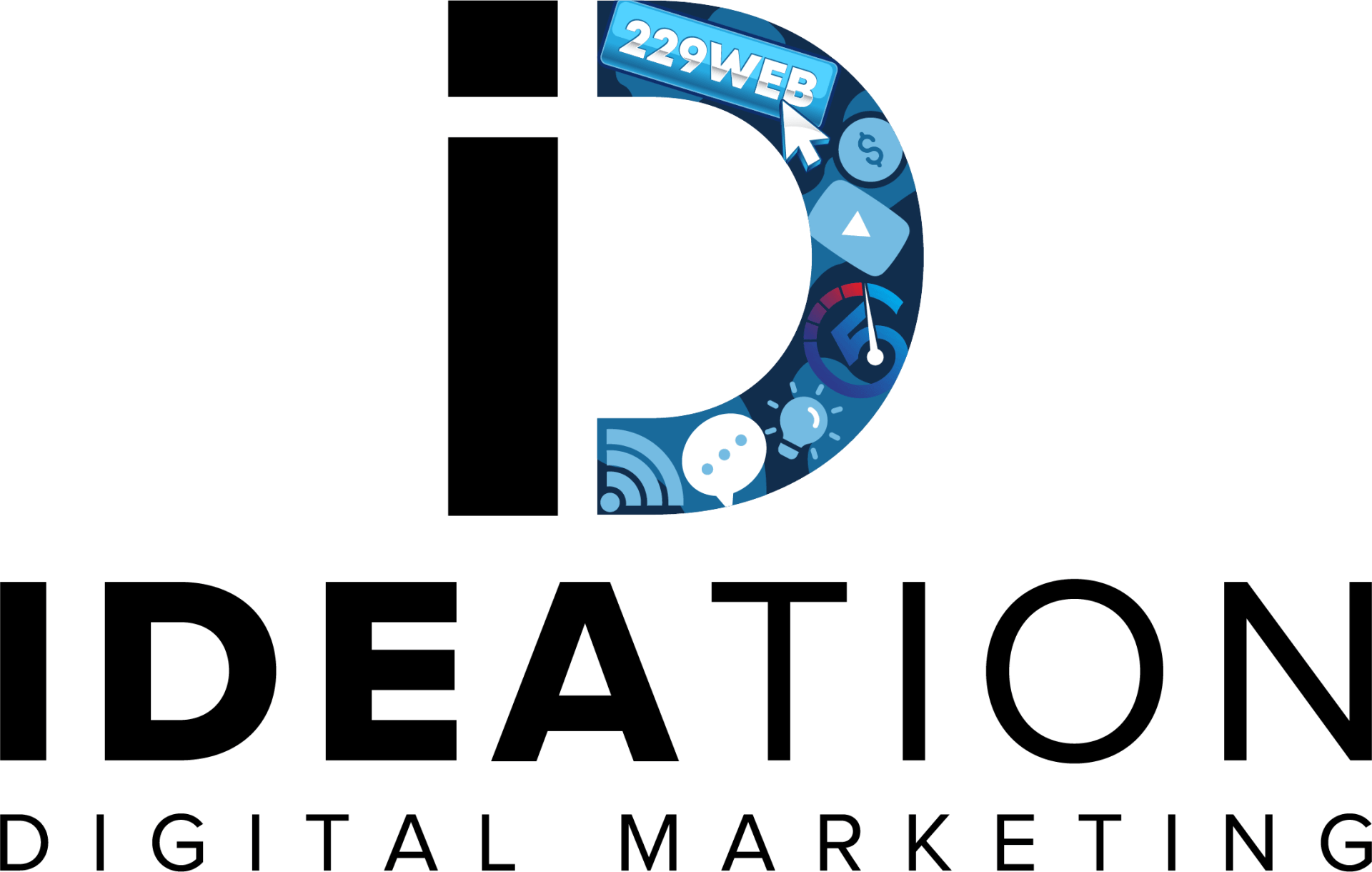Local Content Marketing Strategies: How to Attract and Engage Your Local Audience

Introduction
- A brief overview of how local content marketing helps small businesses and local companies grow brand awareness, improve customer engagement, and generate lead generation through strategic storytelling, geotargeting, and platform-specific content strategies
- Emphasize the value of combining local SEO, content management, and search engine marketing into a single, focused content marketing plan
- Note how aligning your content to your target market’s behavior, language, and location can drastically improve return on investment (ROI) and customer lifetime value
What Are Local Content Marketing Strategies and Why Do They Matter?
- Define local content marketing as a customer-focused content strategy rooted in geography and market research
- Explain the impact on organic search results, reputation, web traffic, and customer success
How Does Local Content Marketing Differ From General Content Marketing?
- Local content prioritizes geotagging, Google Business Profiles, and community-driven messaging
- It taps into consumer behaviour, real-time trends, and word of mouth
What Benefits Do Local Businesses Gain From Targeted Content Marketing?
- Builds brand credibility, supports customer retention, and improves conversion rate optimization
- Drives engagement through personalization and copywriting tailored to specific neighborhoods or cities
How to Develop Effective Local SEO Strategies for Your Business
Which Local Keywords Should You Target for Maximum Impact?
- Use keyword research tools like Google Keyword Planner, Google Analytics, and Microsoft Bing Webmaster Tools
- Include neighborhood names, service categories, and buyer intent phrases in landing pages, blog titles, and URLs
How to Optimize Google Business Profile for Better Local Visibility?
- Update your Google Business Profile with accurate hours, a compelling description, a trackable URL, and keywords
- Add geotagged photos and respond to reviews as part of your customer relationship management (CRM) strategy
What Role Do Local Citations and Backlinks Play in SEO?
- Listings in Yellow Pages, local directories, and reputable local blogs reinforce your business's online advertising presence
- Improves your domain authority and search engine trust through social proof
What Is Hyperlocal Content Marketing and How Can It Boost Engagement?
- Define hyperlocal content and show how it fits within local marketing tactics
- Explain its role in consumer preference development and thought leadership
How to Create Blog Posts and Articles Tailored to Neighborhood Interests?
- Create guides, updates, and listicles about local trends, retail corridors, and community developments
- Focus on language, tone, and behavior specific to each target audience
Which Types of Multimedia Content Work Best for Hyperlocal Audiences?
- Videos, infographics, reels, and testimonials
- Geo-specific hashtags (e.g., #MorgantownEats, #CharlestonEvents) to improve attention and reach
How to Incorporate Local Events and News Into Your Content Strategy?
- Plan around community calendars, local business highlights, and civic updates
- Position your brand as a knowledgeable organization in the local scene
How to Target and Understand Your Local Audience Effectively
What Are the Best Methods to Identify Local Customer Personas?
- Use market research, CRM data, and direct feedback
- Segment based on demographics, income, behavior, and pain points
How to Use Social Media to Engage With Local Communities?
- Focus on channels that matter to your local consumers (e.g., Facebook, Instagram, Threads)
- Use neighborhood hashtags, post polls, and engage in DMs to improve user experience
How Can Local Partnerships Enhance Audience Reach?
- Collaborate with nearby influencers, local podcasts, and fellow small businesses
- Co-create blog posts, videos, or events to expand reach without additional budget or advertising campaign spend
What Are the Best Content Distribution and Promotion Tactics for Local Businesses?
How to Leverage Social Media Advertising for Local Targeting?
- Use Google Ads and social media platforms with geofencing
- Target by ZIP code, interest, and mobile app usage
What Role Does Email Marketing Play in Local Content Promotion?
- Collect email addresses through events or lead magnets
- Send personalized content with links to localized landing pages
How to Build Local Partnerships for Content Sharing and Co-Marketing?
- Offer co-branded webinars or incentives like joint discounts
- Cross-promote using shared newsletters, blogs, and social media posts
How to Measure and Improve the Performance of Your Local Content Marketing?
Which Key Metrics Indicate Local Content Marketing Success?
- Page views by location, bounce rate, lead source, engagement per post, customer satisfaction scores
- Use data to measure marketing channel effectiveness and investment results
How to Use Data to Refine Your Content Strategy Over Time?
- Review performance through Google Analytics, social insights, and CRM reports
- Apply A/B testing to headlines, visuals, and CTAs
What Tools Can Help Track Local Marketing Performance Effectively?
- Software as a service (SaaS) tools like HubSpot, Moz Local, BrightLocal, and Meta Business Suite
- Automate reporting, management, and alerts to save time and improve insight quality
What Are Proven Neighborhood Marketing Tactics to Drive Foot Traffic and Sales?
How to Create Offers and Promotions That Resonate Locally?
- Hyper-targeted deals for specific ZIP codes or neighborhoods
- Tie into a loyalty program to track and incentivize repeat customers
How to Use Local Events and Sponsorships to Increase Brand Awareness?
- Sponsor school events, nonprofits, or sports teams
- Collect testimonials, event footage, and customer service feedback for future content
What Offline Marketing Methods Complement Your Local Content Strategy?
- Branded signage, print collateral with QR codes linking to local landing pages, or podcast mentions
- Supports digital brand visibility and consumer trust
Conclusion
- Reinforce the power of a local content strategy that blends relevance, data, copywriting, and automation
- Encourage businesses to stop relying on generic content and start investing in a local marketing plan with measurable ROI
🎯 Want to see how your local content marketing stacks up?
🚀 Get a free content strategy audit from Ideation Digital—complete with keyword targeting, landing page review, and competitor benchmarking.
📈 Turn content into conversion, not clutter.

Facebook Ad Campaign Objectives: How to Choose and Optimize Your Facebook Ad Goals In the competitive landscape of digital marketing, Facebook advertising remains one of the most powerful platforms for businesses of all sizes. With over 2.9 billion monthly active users, Facebook offers unparalleled reach and sophisticated targeting capabilities. However, the success of your Facebook ad campaigns hinges on one critical decision made at the very beginning of your campaign setup: selecting the right campaign objective. Facebook's advertising platform is built around objectives—specific goals that align with what you want your ads to accomplish. Choosing the appropriate objective not only determines how your ads are optimized and delivered but also significantly impacts your campaign's performance, cost-efficiency, and overall return on investment (ROI). This comprehensive guide explores the full spectrum of Facebook ad campaign objectives, providing you with the knowledge to select, implement, and optimize the right objectives for your specific business goals. Whether you're looking to build brand awareness, generate leads, drive conversions, or achieve other marketing outcomes, understanding these objectives is essential for Facebook advertising success. What Are the Different Facebook Ad Campaign Objectives? Facebook organizes its advertising objectives into three main categories based on the customer journey: Awareness, Consideration, and Conversion. Each category contains specific objectives designed to achieve different marketing goals. How Does Brand Awareness Work in Facebook Ads? The Brand Awareness objective is designed to introduce your business to people who haven't heard of you before. When you select this objective, Facebook optimizes your ad delivery to reach people who are more likely to recall your ads. Key features of Brand Awareness campaigns: 1.Estimated Ad Recall Lift: Facebook measures how many people are likely to remember your ad if asked within two days. 2.Broad Reach: These campaigns typically reach a wider audience than other objectives, focusing on maximizing visibility rather than immediate action. 3.Upper-Funnel Focus: Brand Awareness campaigns target the very top of your marketing funnel, creating initial recognition that can be nurtured through subsequent campaigns. 4.Frequency Control: These campaigns often include frequency caps to prevent ad fatigue while ensuring sufficient exposure for brand recall. 5.Metrics Emphasis: Performance is primarily measured through reach, impressions, and estimated ad recall lift rather than clicks or conversions. Brand Awareness campaigns are particularly effective for: •New businesses entering the market •Established businesses launching new products or services •Companies entering new geographic markets •Rebranding initiatives •Seasonal campaigns where building anticipation is important For optimal results, Brand Awareness campaigns should feature visually distinctive creative that emphasizes your brand's unique value proposition and memorable elements like logos, slogans, or brand colors. What Is the Difference Between Reach and Brand Awareness? While both Reach and Brand Awareness objectives focus on expanding your audience, they serve different strategic purposes: Brand Awareness: •Optimizes for ad recall and brand recognition •Targets users most likely to remember your ad •Focuses on quality of impression and memorability •Best for establishing brand identity and values •Performance measured by estimated ad recall lift Reach: •Optimizes for maximum exposure to unique users •Aims to show your ad to the largest possible audience •Focuses on quantity of people reached •Best for time-sensitive announcements or local awareness •Performance measured by reach and frequency When to choose Reach over Brand Awareness: •For local business promotions targeting specific geographic areas •When announcing limited-time offers or events •For community engagement campaigns •When you need to control the exact frequency of ad exposure •For remarketing to your entire customer base with important updates Reach campaigns allow precise frequency control, letting you specify how often individuals see your ads within a given timeframe. This makes them ideal for announcements where you want to ensure one-time delivery to the maximum number of people, rather than repeated exposure to build recall. How Do Traffic and Engagement Objectives Differ? Traffic and Engagement objectives both fall under the Consideration category but serve different purposes in your marketing funnel: Traffic Objective: •Optimizes for clicks to your destination (website, app, or Messenger conversation) •Targets users most likely to click through to learn more •Focuses on driving volume of visitors to your digital properties •Best for content marketing, product discovery, or generating pixel data •Performance measured by link clicks, CTR, and landing page views Engagement Objective: •Optimizes for interactions with your ad content on Facebook •Targets users most likely to like, comment, share, or claim offers •Focuses on creating social proof and community around your content •Best for building active communities and amplifying content reach •Performance measured by post engagement, page likes, and event responses Key differences in application: 1.Goal orientation: Traffic campaigns aim to move users off Facebook to your owned properties, while Engagement campaigns aim to create activity within the Facebook ecosystem. 2.Audience targeting: Traffic campaigns target "clickers" who are likely to visit external sites, while Engagement campaigns target "interactors" who are active on social platforms. 3.Content requirements: Traffic campaigns need compelling destinations with clear value propositions, while Engagement campaigns need conversation-worthy content that encourages interaction. 4.Measurement approach: Traffic success is measured through off-platform actions, while Engagement success is measured through on-platform metrics. 5.Funnel position: Traffic typically serves the middle of the funnel (consideration), while Engagement can serve both top (awareness) and middle funnel goals. For maximum marketing effectiveness, these objectives often work best in sequence—using Engagement campaigns to build social proof around content, followed by Traffic campaigns that leverage that credibility to drive website visits. When Should You Use Lead Generation and Conversion Objectives? Lead Generation and Conversion objectives both target bottom-of-funnel activities but differ in how they collect and process user information: Lead Generation Objective: •Collects prospect information directly within Facebook through lead forms •Eliminates friction by keeping users on the platform •Pre-populates forms with user data from Facebook profiles •Ideal for collecting contact information for sales follow-up •Best for businesses with strong follow-up processes Conversion Objective: •Drives specific valuable actions on your website or app •Requires Facebook Pixel or SDK implementation for tracking •Optimizes for completed actions like purchases or sign-ups •Ideal for e-commerce and direct response campaigns •Best for businesses with optimized conversion funnels When to use Lead Generation: •When your sales process requires personal contact before purchase •If your website has poor mobile optimization or slow load times •When you want to minimize steps between ad and information collection •If you have a CRM system and follow-up process ready to handle leads •For complex products/services that require consultation When to use Conversion: •When you have a streamlined online purchase process •If you have sufficient pixel data (ideally 50+ conversions per week) •When you want to optimize for specific high-value actions •If you have multiple conversion events you want to track •For retargeting campaigns to close sales with warm prospects Both objectives require strong follow-through: Lead Generation campaigns need prompt response to form submissions, while Conversion campaigns need optimized landing pages and checkout processes to maximize results. What Are App Installs and Video Views Objectives? These specialized objectives address specific marketing goals related to mobile applications and video content: App Installs Objective: •Optimizes for downloads and installations of your mobile application •Targets users most likely to download and open apps •Requires Facebook SDK integration for tracking and optimization •Can optimize for app events beyond installation (purchases, registrations) •Allows for deep linking to specific in-app locations App Installs campaigns are most effective when: •Launching a new mobile application •Expanding your app's user base in specific demographics •Promoting app updates with significant new features •Running user acquisition campaigns with specific CPI (cost per install) targets •Retargeting users who have shown interest but haven't installed Video Views Objective: •Optimizes for maximum video content consumption •Targets users most likely to watch videos for longer durations •Offers options to optimize for ThruPlay (complete views) or 2-Second Views •Supports various video formats including in-stream, feed, and Stories •Enables sequential storytelling through video series Video Views campaigns are most effective when: •Showcasing product demonstrations or tutorials •Telling brand stories that require visual and audio elements •Building audience segments based on video engagement for retargeting •Launching new visual content that benefits from motion and sound •Creating awareness through entertaining or educational video content Both objectives benefit from high-quality creative assets—polished app store listings for App Installs and engaging thumbnail images and opening sequences for Video Views—to maximize performance once the right audience is reached. How Do You Choose the Right Facebook Ad Objective for Your Campaign? Selecting the appropriate objective is a strategic decision that should align with your business goals, audience readiness, and available assets. What Factors Influence Objective Selection? Several key considerations should guide your objective choice: 1.Customer Journey Stage: Match your objective to where your target audience is in the funnel: •Cold audiences (unfamiliar with your brand): Awareness objectives •Warm audiences (familiar but haven't purchased): Consideration objectives •Hot audiences (previous engagers or customers): Conversion objectives 2.Available Assets and Infrastructure: •Do you have Facebook Pixel installed for conversion tracking? •Is your website optimized for conversions? •Do you have high-quality video content available? •Is your mobile app ready for promotion? 3.Campaign Timeline and Budget: •Short-term campaigns with limited budgets may need to focus on lower-funnel objectives •Longer-term campaigns can build through the funnel from awareness to conversion •Certain objectives (like Conversions) require minimum budgets to gather sufficient data 4.Business Model and Sales Cycle: •E-commerce: Often prioritizes Traffic and Conversion objectives •B2B services: May focus on Lead Generation and Brand Awareness •Subscription businesses: Might emphasize App Installs or Conversion objectives •Local businesses: Often benefit from Reach and Store Traffic objectives 5.Competitive Landscape: •Highly competitive markets may require more investment in upper-funnel objectives •Niche markets with high purchase intent might skip directly to conversion-focused objectives 6.Seasonality and Timing: •Peak seasons may warrant more aggressive conversion objectives •Off-peak periods might be better for brand building and audience cultivation By systematically evaluating these factors, you can narrow down the most appropriate objective for your specific campaign circumstances. How to Align Business Goals With Facebook Ad Objectives? Creating alignment between business outcomes and Facebook's predefined objectives is essential for campaign success: Business Goal Recommended Facebook Objective(s) Why It Works Increase brand recognition Brand Awareness, Reach Maximizes visibility and recall among potential customers Drive website traffic Traffic Optimizes for users most likely to click through to your site Boost engagement on social content Engagement Finds users who actively interact with posts Generate leads for sales team Lead Generation Collects prospect information efficiently within the platform Increase online sales Conversions Optimizes for completed purchases or sign-ups Promote mobile application App Installs Targets users with history of downloading similar apps Showcase video content Video Views Finds users who watch videos to completion Drive foot traffic to physical location Store Traffic Targets people near your business locations Re-engage existing customers Conversions, Traffic Reconnects with known users for repeat business Launch new product Brand Awareness → Engagement → Conversions Creates full-funnel approach for new offerings For complex business goals, consider using campaign sequences that move customers through the funnel: 1. Awareness Phase: Introduce your brand to cold audiences 2. Consideration Phase: Retarget aware users with more detailed information 3. Conversion Phase: Present offers to engaged users ready to purchase This strategic alignment ensures your Facebook advertising supports concrete business outcomes rather than vanity metrics. Which Objectives Work Best for Small and Medium Businesses? Small and medium businesses (SMBs) often have different constraints and opportunities compared to larger enterprises: Most effective objectives for SMBs: 1.Traffic: Often the best starting point for SMBs with limited data, driving visitors to your website where you can begin building pixel data for more advanced objectives. 2.Lead Generation: Particularly valuable for service-based SMBs, collecting prospect information without requiring sophisticated landing pages. 3.Conversions (with limitations): Effective once you've gathered sufficient pixel data, though may require patience during the learning phase. 4.Engagement: Helps build social proof and community around your brand with relatively low investment. Special considerations for SMBs: •Budget Constraints: Start with objectives that perform well at lower spend levels (Traffic, Engagement) before moving to more data-hungry objectives (Conversions). •Data Limitations: Newer businesses may lack the conversion data needed for effective optimization of lower-funnel campaigns. •Local Focus: Many SMBs benefit from location-based objectives like Store Traffic or Reach with geographic targeting. •Resource Constraints: Choose objectives that match your follow-up capabilities (don't select Lead Generation if you lack time to contact leads promptly). •Testing Approach: Use smaller budgets to test multiple objectives in parallel to determine what works best for your specific business. For SMBs, a pragmatic approach often involves starting with simpler objectives and gradually advancing to more sophisticated options as data, budget, and experience increase. How to Use Facebook Ads Manager to Select Objectives? Navigating Facebook Ads Manager effectively ensures you select and configure the right objective: 1.Accessing Campaign Creation: •Log into Facebook Ads Manager (business.facebook.com/ads manager) •Click the green "+ Create" button •You'll immediately be prompted to select a campaign objective 2.Understanding the Interface: •Objectives are organized into three categories: Awareness, Consideration, and Conversion •Hovering over each objective provides a brief description •Some objectives may be unavailable depending on your account history and settings 3.Selection Process Best Practices: •Consider creating a campaign using Advantage+ Campaign Budget to test multiple objectives •Use the "Duplicate" feature to test the same ad sets with different objectives •Review the specific metrics each objective will optimize for before confirming 4.Advanced Configuration Options: •After selecting an objective, you can further refine your campaign settings •For Conversion campaigns, you'll need to specify which conversion event to optimize for •For Lead Generation, you'll need to create or select a lead form •For App Installs, you'll need to connect your app and select events 5.Budget Allocation Considerations: •Different objectives may require different minimum budgets for effective learning •Consider using Campaign Budget Optimization to automatically distribute budget across ad sets •Set realistic daily or lifetime budgets based on your objective's typical cost metrics By methodically working through these steps in Ads Manager, you can ensure your campaign is built on the appropriate foundation for your specific marketing goals. What Are the Best Practices for Optimizing Facebook Ad Campaign Objectives? Once you've selected the right objective, optimization strategies can significantly improve performance. How to Use Campaign Budget Optimization (CBO) Effectively? Campaign Budget Optimization (CBO) is Facebook's algorithm-driven budget allocation system that distributes your campaign budget across ad sets to maximize results: Key principles for effective CBO implementation: 1.Appropriate Campaign Structure: •Group similar ad sets under one CBO campaign (similar audiences, objectives, or products) •Avoid mixing vastly different audience sizes in the same CBO campaign •Consider separating prospecting and retargeting into different CBO campaigns 2.Budget Setting Strategy: •Start with at least 2x your target cost per result multiplied by 50 (for statistical significance) •For example: If targeting 10costperlead,startwithatleast1,000 lifetime budget •Allow 3-7 days of learning period before making significant changes 3.Ad Set Spend Limits: •Use minimum spend limits to ensure important ad sets receive sufficient budget •Apply maximum spend limits to prevent high-performing but limited-scale ad sets from consuming the entire budget •Start without limits and add them only if budget distribution becomes problematic 4.Performance Monitoring: •Focus on campaign-level results rather than individual ad set performance •Expect performance fluctuations during the learning phase •Look for overall efficiency improvements rather than equal distribution 5.Testing and Iteration: •Test CBO against non-CBO campaigns to verify performance improvements •Gradually increase budget (no more than 20% at once) after the learning phase •Remove underperforming ad sets rather than adjusting their individual budgets When implemented correctly, CBO can improve overall campaign efficiency by dynamically allocating budget to the best-performing ad sets while reducing manual optimization time. Why Is Facebook Pixel Important for Tracking Objectives? The Facebook Pixel is a critical technical component that enables advanced objective optimization and measurement: Core functions of the Facebook Pixel: 1.Conversion Tracking: Records specific actions users take on your website after clicking your ads, essential for Conversion objectives. 2.Audience Building: Creates custom audiences based on website behavior for retargeting campaigns. 3.Optimization Intelligence: Provides data that helps Facebook's algorithm find users similar to those who have converted. 4.Attribution Insights: Connects ad interactions to conversion events across devices and time periods. 5.Campaign Refinement: Offers data to improve targeting, creative, and objective selection based on actual results. Best practices for Pixel implementation: 1.Complete Installation: •Install base Pixel code on all website pages •Add specific event codes for important actions (Purchase, Lead, Add to Cart, etc.) •Verify installation using Facebook's Pixel Helper browser extension 2.Event Setup and Prioritization: •Configure standard events for common actions •Create custom conversions for business-specific goals •Establish event prioritization for iOS 14+ campaigns (Aggregated Event Measurement) 3.Advanced Configurations: •Implement value tracking to record transaction amounts •Set up parameter tracking for product IDs, content types, etc. •Configure server-side tracking for improved data accuracy 4.Compliance Considerations: •Update privacy policy to disclose Pixel usage •Implement consent management for regions with strict privacy regulations •Use Facebook's Conversions API alongside the Pixel for more reliable data collection Without proper Pixel implementation, Conversion objectives cannot optimize effectively, and campaign measurement will be severely limited. Investing time in correct Pixel setup pays dividends across all subsequent Facebook advertising efforts. How Can A/B Testing Improve Objective Performance? Systematic A/B testing helps refine campaigns for maximum objective achievement: Key elements to test by objective type: 1.Brand Awareness and Reach: •Creative formats (image vs. video vs. carousel) •Ad copy length and tone •Audience breadth vs. specificity •Frequency caps and scheduling 2.Traffic and Engagement: •Call-to-action buttons and placement •Headline variations and question formats •Image/video content styles •Post text length and information hierarchy 3.Lead Generation: •Form length and field requirements •Lead magnet offers and value propositions •Qualification questions and sequencing •Thank you page messaging and expectations 4.Conversions and Catalog Sales: •Landing page experiences and load times •Price presentation and discount structures •Urgency elements and scarcity indicators •Trust signals and social proof placement Effective A/B testing methodology: 1.Isolate Variables: Test one element at a time for clear cause-and-effect understanding. 2.Ensure Statistical Significance: Run tests until you have enough data for confidence (typically 100+ results per variation). 3.Control External Factors: Run test variations simultaneously to minimize timing effects. 4.Document and Build Knowledge: Create a testing roadmap and library of learnings to apply across campaigns. 5.Test at Multiple Levels: Conduct tests at campaign level (objectives), ad set level (audiences), and ad level (creative). By implementing a structured testing program, you can continuously improve performance for your chosen objectives, leading to decreasing costs and increasing results over time. What Are Key Facebook Ad Performance Metrics to Monitor? Different objectives require focus on different performance indicators: Brand Awareness and Reach Metrics: •Reach (unique users) •Frequency (average impressions per user) •Estimated ad recall lift •Cost per 1,000 impressions (CPM) •Brand lift study results (if available) Traffic Metrics: •Click-through rate (CTR) •Cost per click (CPC) •Landing page views •Bounce rate (via Google Analytics) •Average session duration Engagement Metrics: •Engagement rate (engagements/impressions) •Cost per engagement •Share rate •Comment sentiment and quality •Page growth and follow rate Lead Generation Metrics: •Cost per lead (CPL) •Lead form completion rate •Lead quality score (if using qualifying questions) •Lead-to-opportunity conversion rate •Cost per qualified lead Conversion Metrics: •Cost per acquisition (CPA) •Return on ad spend (ROAS) •Conversion rate •Average order value •Customer lifetime value Cross-Objective Metrics: •Relevance score/Quality ranking •Frequency •First-time impression ratio •Audience saturation •Results rate (results/impressions) For comprehensive campaign assessment, combine Facebook's native metrics with data from your website analytics, CRM system, and sales reports to understand the full customer journey initiated by your Facebook ads. How Do Targeting Strategies Vary by Facebook Ad Objective? Different campaign objectives require tailored audience strategies for optimal performance. What Audience Insights Are Essential for Brand Awareness Campaigns? Brand Awareness campaigns benefit from specific audience approaches: 1.Demographic Expansion: •Cast a wider net than lower-funnel campaigns •Include adjacent age groups and broader interest categories •Focus on potential market segments not currently in your customer base 2.Psychographic Prioritization: •Target based on values and lifestyle alignment rather than immediate purchase intent •Use interests that correlate with brand affinity rather than product specificity •Consider life events that might trigger category awareness 3.Exclusion Strategies: •Exclude existing customers and engaged audiences to focus budget on new prospects •Remove converters from the past 180 days to prevent redundant awareness building •Consider excluding audiences who have already seen your awareness content 4.Advanced Targeting Approaches: •Utilize lookalike audiences based on your best customers (1-3% similarity) •Test broad targeting with minimal parameters to let Facebook's algorithm optimize •Consider contextual targeting around relevant events or seasons 5.Measurement Considerations: •Set up brand lift studies for larger campaigns to measure actual awareness impact •Create holdout groups to compare aided and unaided brand recall •Track view-through conversions to measure long-term impact of awareness campaigns Brand Awareness targeting should balance reach with relevance—broad enough to expand your audience but focused enough to remain cost-effective. How to Target Leads and Conversions Effectively? Lead Generation and Conversion campaigns require more precise targeting to reach high-intent audiences: 1.Intent Signals: •Target based on behaviors indicating purchase readiness •Focus on in-market audiences and recent category engagers •Utilize "engaged shoppers" and other high-intent behavioral segments 2.Custom Audience Utilization: •Retarget website visitors with specific page view patterns •Create audiences based on engagement with previous ads or content •Upload customer lists for lookalike audience creation 3.Funnel Stage Segmentation: •Separate campaigns for different funnel stages (consideration vs. decision) •Adjust bid strategies based on audience temperature •Create sequential campaigns that move users toward conversion 4.Value-Based Optimization: •Implement value-based lookalike audiences based on customer purchase value •Use lifetime value data to find highest-potential prospects •Adjust bidding based on potential customer value, not just conversion likelihood 5.Exclusion Refinement: •Remove recent purchasers to prevent redundant targeting •Exclude low-value converters to focus budget on quality leads •Create suppression lists for customers with negative experiences For these bottom-funnel objectives, audience quality typically outweighs quantity. Smaller, more targeted audiences often deliver better cost-per-result metrics than broader approaches. What Are Best Practices for App Install and Video View Targeting? These specialized objectives benefit from unique targeting approaches: App Install Targeting Best Practices: 1.Device and Technical Targeting: •Target specific device types compatible with your app •Consider operating system versions and device capabilities •Adjust for WiFi-only targeting for larger apps 2.Behavioral Indicators: •Target users who have installed similar apps •Focus on frequent app downloaders and early adopters •Consider technology enthusiasts and category-specific interests 3.Retention-Focused Approaches: •Create lookalikes based on retained users, not just installers •Target audiences likely to engage post-install •Consider excluding "app bouncer" segments who frequently install and delete 4.Geographical Considerations: •Prioritize regions with strong app usage patterns •Consider connection speed and technology adoption by region •Test emerging markets for cost-efficient growth Video Views Targeting Best Practices: 1.Engagement Propensity: •Target users who frequently watch videos on Facebook •Focus on audiences with higher average watch times •Consider targeting based on previous video engagement 2.Content Alignment: •Match audience interests closely to video content themes •Target fans of similar content creators or channels •Consider contextual targeting around related events or topics 3.Technical Considerations: •For longer videos, prioritize WiFi users •Consider time-of-day targeting when viewers have time to watch •Optimize for devices with larger screens for complex content 4.Sequential Strategies: •Target complete viewers of previous videos with follow-up content •Create audience segments based on watch duration thresholds •Develop nurture sequences that build on previous video content Both objectives benefit from close alignment between audience characteristics and content specifics, with technical considerations playing a larger role than in other campaign types. What Are Examples of Successful Facebook Ad Campaigns by Objective? Examining real-world success stories provides valuable insights for your own campaigns. How Have Brands Used Brand Awareness Objectives Successfully? Case Study 1: Consumer Packaged Goods Brand Launch •Challenge: Introduce new sustainable household product line with zero brand recognition •Strategy: •Broad targeting of environmentally-conscious consumers •Video-first creative highlighting packaging innovation •Sequential messaging introducing brand values before products •Results: •3.2 million unique users reached •23-point lift in brand recall •17% increase in store distribution requests •Cost per estimated ad recall lift: $0.34 Case Study 2: Financial Services Brand Repositioning •Challenge: Shift perception from traditional bank to tech-forward financial partner •Strategy: •Targeted millennials and Gen Z with financial independence interests •Used Stories format to showcase mobile banking features •Employed bright, non-traditional banking imagery •Results: •42% increase in brand attribute association with "innovative" •2.1 million unique users reached •28% increase in mobile app downloads as secondary benefit •18-point lift in message association Key Success Factors in Brand Awareness Campaigns: 1.Distinctive visual identity that stands out in feeds 2.Emotional connection rather than feature promotion 3.Frequency management to ensure sufficient exposure 4.Clear, single-minded messaging rather than complex value propositions 5.Measurement beyond Facebook metrics to track real business impact Successful brand awareness campaigns typically require patience and consistent investment, with results building over time rather than generating immediate response. What Are Effective Lead Generation Campaign Examples? Case Study 1: B2B Software Company •Challenge: Generate qualified demo requests for enterprise software solution •Strategy: •Targeted IT decision-makers and operations executives •Offered industry-specific white papers as lead magnets •Used qualification questions to score leads automatically •Implemented lead-to-account matching for sales follow-up •Results: •420 qualified leads generated •62% reduction in cost per qualified lead compared to previous campaigns •28% lead-to-opportunity conversion rate •$1.2 million in pipeline value attributed to campaign Case Study 2: Real Estate Development •Challenge: Generate qualified buyer inquiries for luxury condominium development •Strategy: •Created virtual tour videos of property •Targeted high-net-worth individuals in specific locations •Used multi-step lead form with income qualification •Implemented immediate follow-up system with sales team •Results: •215 qualified leads generated •24 property tours scheduled directly from leads •8 purchase contracts signed •384% ROI on advertising spend Key Success Factors in Lead Generation Campaigns: 1.Clear value exchange for contact information 2.Streamlined form design with minimal required fields 3.Strategic qualification questions that balance completion rate with lead quality 4.Strong integration between Facebook leads and CRM systems 5.Rapid follow-up process (ideally within 5 minutes of submission) 6.Retargeting sequences for form abandoners The most successful lead generation campaigns create alignment between marketing qualification criteria and sales team expectations, ensuring leads are not just numerous but valuable. How Do Conversion Campaigns Drive Sales? Case Study 1: Direct-to-Consumer Fashion Brand •Challenge: Increase online sales of seasonal collection •Strategy: •Implemented full-funnel approach with separate campaigns for each stage •Created dynamic product ads based on inventory levels •Utilized value-based lookalike audiences from previous purchasers •Employed catalog sales objective with collection-specific optimization •Results: •3.8x return on ad spend •42% decrease in cost per acquisition •28% increase in average order value •22,000 purchases attributed to campaign Case Study 2: Subscription Meal Kit Service •Challenge: Acquire new subscribers with positive unit economics •Strategy: •Tested multiple promotional offers to identify optimal acquisition incentive •Created lookalike audiences based on subscribers with 3+ month retention •Implemented conversion value optimization bidding •Developed creative showcasing meal preparation experience •Results: •5,200 new subscribers acquired •Customer acquisition cost 24% below target •68% of acquired customers continued beyond promotional period •Lifetime value to customer acquisition cost ratio of 3.2:1 Key Success Factors in Conversion Campaigns: 1.Robust pixel implementation with value tracking 2.Clear understanding of acceptable customer acquisition costs 3.Optimized post-click experience with minimal friction 4.Strategic use of offers and promotions 5.Creative that addresses common purchase objections 6.Retargeting sequences for cart abandoners and site visitors Successful conversion campaigns typically require more technical setup and landing page optimization than other objectives, but deliver more directly measurable business results. How Do Facebook Ad Campaign Objectives Impact Advertising Costs and ROI? Understanding the financial implications of different objectives helps with budget planning and performance expectations. What Is the Average Cost Per Result for Different Objectives? Cost benchmarks vary significantly by objective, industry, and targeting: Awareness Objectives: •Brand Awareness: 2.00−8.00 per 1,000 impressions •Reach: 1.00−5.00 per 1,000 impressions •Estimated Ad Recall Lift: 0.20−2.00 per person Consideration Objectives: •Traffic: 0.25−1.50 per click •Engagement: 0.05−0.50 per engagement •Video Views: 0.01−0.15 per view (3-second) •Lead Generation: 2.00−30.00 per lead Conversion Objectives: •Conversions: 5.00−80.00 per conversion •Catalog Sales: 5%-25% of item price per sale •Store Traffic: 2.00−15.00 per store visit •App Installs: 1.50−5.00 per install Factors influencing cost variations: 1.Industry competitiveness: Finance, insurance, and legal services typically have higher costs across all objectives. 2.Audience specificity: More narrowly targeted audiences generally have higher costs per result. 3.Seasonal factors: Costs typically increase during peak shopping seasons and holidays. 4.Ad quality: Higher relevance scores and engagement rates correlate with lower costs. 5.Account history: Established accounts with positive performance history often receive more favorable pricing. 6.Geographic targeting: Costs vary significantly by country, region, and even city. These benchmarks should be used as general guidelines rather than exact expectations, as individual campaign performance can vary substantially based on execution quality and market conditions. How to Calculate Return on Ad Spend (ROAS) by Objective? ROAS calculation methods should be tailored to campaign objectives: Direct Response Objectives (Conversions, Catalog Sales): •Basic ROAS = Revenue Generated ÷ Ad Spend •Example: 50,000revenue÷10,000 ad spend = 5.0 ROAS Lead Generation Objective: •ROAS = (Number of Leads × Average Lead Value) ÷ Ad Spend •Example: (200 leads × 50value)÷5,000 ad spend = 2.0 ROAS Traffic Objective: •ROAS = (Website Visitors × Conversion Rate × Average Order Value) ÷ Ad Spend •Example: (10,000 visitors × 2% conversion × 80AOV)÷4,000 ad spend = 4.0 ROAS Brand Awareness and Reach: •ROAS = (Impressions × Impression Value) ÷ Ad Spend •Example: (2,000,000 impressions × 0.005value)÷8,000 ad spend = 1.25 ROAS Advanced ROAS Considerations: 1.Attribution Windows: Determine appropriate lookback periods (1-day, 7-day, 28-day) based on sales cycle. 2.Lifetime Value Inclusion: For subscription or repeat purchase businesses, factor in customer lifetime value rather than initial purchase value. 3.Assisted Conversions: Consider view-through conversions and cross-device conversions in holistic ROAS calculations. 4.Incrementality Testing: Use holdout groups or geo-testing to determine true incremental value beyond organic conversions. 5.Blended ROAS: For multi-objective campaigns, calculate combined ROAS across all campaign elements. Setting appropriate ROAS targets by objective helps create realistic performance expectations and proper budget allocation across your marketing funnel. How Do Bidding Strategies Affect Campaign Costs? Bidding strategy selection significantly impacts both costs and results: Available Bidding Strategies by Objective: 1.Lowest Cost (Automatic): •Available for: All objectives •How it works: Facebook automatically bids to get the most results at the lowest cost •Best for: Testing new campaigns, limited budgets, flexible performance targets 2.Cost Cap: •Available for: App Installs, Conversions, Lead Generation, Catalog Sales •How it works: Sets maximum cost per result you're willing to pay •Best for: Strict CPA requirements, predictable unit economics 3.Bid Cap: •Available for: Most objectives •How it works: Sets maximum bid for each auction •Best for: Advanced advertisers with auction insights, specific impression goals 4.Minimum ROAS: •Available for: Catalog Sales, Conversions (with value optimization) •How it works: Sets minimum return on ad spend target •Best for: E-commerce with consistent value tracking, profit margin focus Impact of Bidding Strategies on Performance: 1.Delivery Speed vs. Efficiency: •Higher bids/caps = faster delivery but potentially higher costs •Lower bids/caps = more efficient results but slower delivery and potentially limited scale 2.Learning Phase Considerations: •Restrictive bidding strategies can extend learning phase duration •Starting with Lowest Cost often provides data for more informed caps later 3.Budget Utilization: •Too-restrictive caps may prevent full budget utilization •Too-loose caps may exhaust budget without optimization 4.Audience Size Interaction: •Smaller audiences typically require higher bids for delivery •Larger audiences allow more selective bidding at lower costs The optimal bidding strategy often changes throughout a campaign's lifecycle, typically starting with more flexible approaches and becoming more controlled as performance data accumulates. How Can You Use Facebook Ads Manager Tools to Manage Campaign Objectives? Facebook provides several tools to help advertisers select, implement, and evaluate objectives. What Features in Facebook Ads Manager Support Objective Selection? Facebook Ads Manager offers several features to guide objective decisions: 1.Guided Creation Flow: •Step-by-step campaign creation process •Objective descriptions and recommendations •Visual organization by marketing funnel stage 2.Campaign Objective Recommendations: •AI-powered suggestions based on account history •Business vertical-specific recommendations •Seasonal objective suggestions based on industry trends 3.Performance Simulator: •Estimates results based on selected objectives and settings •Provides delivery and reach forecasts •Suggests budget adjustments for goal achievement 4.A/B Testing Framework: •Built-in testing capability for comparing objectives •Statistical significance calculations •Automated winner declaration 5.Experiments Tool: •More advanced testing capabilities •Holdout group creation for incrementality measurement •Cross-objective comparison reporting 6.Learning Phase Indicators: •Visual cues showing campaign optimization status •Estimates of remaining learning time •Recommendations to avoid disrupting learning These tools help advertisers make more informed decisions about which objectives to select and how to configure them for optimal performance. How to Set Up and Monitor Campaigns by Objective? Each objective requires specific setup and monitoring approaches: Brand Awareness and Reach: •Setup Focus: Audience definition, frequency caps, placement selection •Key Settings: Frequency caps, schedule optimization •Monitoring Cadence: Weekly performance reviews •Optimization Actions: Creative refreshes, audience expansion Traffic and Engagement: •Setup Focus: Destination experience, creative variety, CTA selection •Key Settings: Placement optimization, device targeting •Monitoring Cadence: Every 2-3 days •Optimization Actions: Ad rotation, bid adjustments, placement refinement Lead Generation: •Setup Focus: Form design, lead quality settings, CRM integration •Key Settings: Form fields, thank you screen, lead delivery method •Monitoring Cadence: Daily review •Optimization Actions: Form field adjustments, audience refinement, offer testing Conversions and Catalog Sales: •Setup Focus: Pixel verification, event selection, value tracking •Key Settings: Conversion event priority, value optimization •Monitoring Cadence: Daily or real-time monitoring •Optimization Actions: Landing page improvements, audience exclusions, product set refinements General Monitoring Best Practices: 1.Establish Baselines: Document average performance metrics by objective for your account 2.Create Custom Reports: Build objective-specific dashboards focusing on relevant metrics 3.Set Alert Thresholds: Configure notifications for significant performance changes 4.Document Optimizations: Track changes made and resulting performance shifts 5.Regular Performance Reviews: Schedule structured reviews based on objective type and spend level Proper campaign monitoring cadence should align with both spend level and objective type, with lower-funnel objectives typically requiring more frequent attention. What Reporting Metrics Help Evaluate Objective Success? Facebook provides objective-specific reporting to evaluate campaign performance: Customized Columns by Objective: 1.Brand Awareness: •Estimated ad recall lift •Estimated ad recall lift rate •Cost per estimated ad recall lift •Reach and frequency metrics 2.Traffic: •Outbound clicks •Landing page views •CTR (link click-through rate) •CPC (cost per link click) •Landing page view rate 3.Engagement: •Post engagements •Page likes •Post reactions •Comments and shares •Event responses 4.Lead Generation: •Leads •Cost per lead •Lead form opens •Lead form completion rate •Messaging conversations 5.Conversions: •Conversions (by type) •Cost per conversion •Conversion value •ROAS (return on ad spend) •Add to cart and checkout initiations Advanced Reporting Features: 1.Breakdown Options: •Age and gender performance differences •Placement effectiveness •Device and platform comparisons •Time of day and day of week analysis 2.Attribution Comparison: •View-through vs. click-through attribution •Attribution window comparison (1-day, 7-day, 28-day) •Cross-device conversion paths 3.Custom Metrics: •Calculated fields for business-specific KPIs •Blended metrics across objectives •Efficiency ratios and custom formulas 4.Automated Insights: •AI-generated performance observations •Anomaly detection and alerts •Opportunity identification 5.Reporting Automation: •Scheduled report delivery •API connections to external dashboards •Data export for advanced analysis Creating objective-aligned reporting templates ensures you're evaluating campaigns on the most relevant metrics rather than vanity measurements that don't connect to business outcomes. Conclusion: Selecting the Right Facebook Ad Objectives for Your Business Choosing the appropriate Facebook ad campaign objective is a strategic decision that forms the foundation of your advertising success. By understanding the full range of available objectives, aligning them with your business goals, and implementing best practices for optimization, you can create more effective campaigns that deliver measurable results. Remember these key principles when selecting and implementing Facebook ad objectives: 1.Match objectives to funnel stages: Use awareness objectives for cold audiences, consideration objectives for warm audiences, and conversion objectives for hot audiences. 2.Build technical infrastructure: Ensure proper tracking implementation (Pixel, SDK, Conversions API) to enable advanced objectives and accurate measurement. 3.Test systematically: Compare different objectives with similar audiences to determine the most effective approach for your specific business case. 4.Optimize continuously: Use Facebook's tools and best practices to refine campaigns based on performance data. 5.Measure holistically: Look beyond Facebook's native metrics to understand the true business impact of your campaigns across the entire customer journey. By applying these principles and the detailed strategies outlined in this guide, you can maximize the return on your Facebook advertising investment and achieve your specific marketing goals. Ready to optimize your Facebook ad campaigns with the perfect objectives? Contact our team of Facebook advertising specialists for a personalized consultation and discover how we can help you create high-performing campaigns tailored to your business goals.

Top Web Design Agencies in Charleston, WV: A 2025 Comparison Guide A diverse team of web designers collaborating in a modern office space Choosing the right web design agency in Charleston, WV, is pivotal for local businesses aiming to attract more customers, improve local search rankings, and convert website traffic into tangible revenue. This guide offers a data-driven comparison of the premier web design agencies in Charleston, WV, empowering growth-focused businesses to select a partner that aligns with their objectives, budget, and technical requirements. You'll discover which agency attributes are most critical, how to effectively evaluate portfolios and client feedback, the amplified impact of integrated marketing on design efforts, and realistic budget and timeline expectations for local projects in 2025. This resource features in-depth agency profiles, a side-by-side service comparison, cost breakdowns, and actionable steps to initiate a project with a trusted provider. Throughout, we highlight essential services like Web Design and Development , underscoring why local expertise, responsive design, and integrated SEO remain crucial for Charleston, WV, organizations striving for measurable digital growth. Why Partnering with the Right Web Design Agency Is Essential for Charleston, WV Businesses Selecting the ideal web design agency means engaging a partner who not only crafts visually compelling websites but also drives measurable business outcomes through strategic design, robust performance, and enhanced local visibility. A well-executed website boosts discoverability in Charleston by strengthening local SEO signals and optimizing conversion rates via user-centric UI/UX—directly impacting lead generation and foot traffic. Security and ongoing maintenance are integral components of this value proposition, safeguarding customer trust and preventing downtime that can erode search presence. Investing in an agency that aligns design with key business performance indicators yields a higher return on investment by converting visitors into loyal customers and solidifying brand reputation. A focused evaluation of agency capabilities should therefore commence with business outcomes, not merely aesthetics—naturally leading into the specific ways an optimized online presence fuels local growth. How Does a Powerful Online Presence Fuel Local Business Expansion? A robust online presence is the synergy of discoverability , credibility , and conversion optimization that drives measurable local growth for Charleston, WV, businesses. Discoverability is achieved through targeted local keywords and Google Business Profile signals that attract qualified local traffic. Credibility is built upon professional design, rapid performance, and clear messaging that convert visitors into leads. Conversion optimization relies on well-structured calls to action and streamlined user journeys. Quantifying this impact involves tracking metrics such as organic traffic, local search rankings, lead-form submissions, and conversion rates. Continuous monitoring of these KPIs enables businesses to refine design and content strategies, ensuring the website consistently supports customer acquisition and revenue growth. Understanding these outcome-focused metrics prepares businesses to ask performance-oriented questions during the selection process. What Is the Significance of Local Expertise in Web Design Success? A local web design team engaging with clients in a community setting Local expertise is invaluable because Charleston consumers exhibit location-specific search behaviors, preferences, and trust indicators that are best addressed by an agency deeply embedded in the market. Ideation Digital , familiar with Charleston’s business landscape, effectively implements local keyword targeting, local schema markup, and content that resonates with community language and purchasing triggers. Local collaboration allows easier access for discovery meetings, stakeholder workshops, or in-person reviews—accelerating alignment and feedback loops. Prioritizing documented local projects and regionally relevant case studies helps confirm that Ideation Digital understands your market. Why Are Responsive and Secure Web Design Imperative in 2025? Responsive web design showcased across multiple devices in a contemporary workspace Responsive and secure web design is essential as mobile-first indexing and heightened security expectations directly influence search rankings and user trust. Responsive layouts ensure seamless experiences across all devices, reducing bounce rates and improving engagement metrics that search engines prioritize. Robust security practices—including SSL, frequent updates, and backups—protect sensitive data and maintain site uptime. Accessibility and performance optimizations broaden reach and enhance usability, leading to improved conversions. Prioritizing speed, secure hosting configurations, and accessibility from inception results in durable websites that excel in both search performance and conversion rates. Key Considerations When Hiring a Web Designer in Charleston, WV Hiring a web designer requires balancing technical proficiency, proven results, service scope, transparent pricing, and local alignment. Expertise & Portfolio – Demonstrate capacity to deliver for your industry and conversion goals. Reviews & Testimonials – Offer crucial social proof when assessed for consistency across platforms. Service Scope – Integrated SEO, content strategy, e-commerce, and maintenance influence long-term value. Pricing Structure – Dictates budget predictability and scalability. Local Presence – Impacts collaboration and accountability. A structured decision framework minimizes risk of scope creep and keeps outcomes aligned with business objectives. How Do Expertise and Portfolio Shape Your Decision? Expertise and portfolio reveal an agency’s technical capabilities, design aesthetic, and approach to problem-solving. Evaluate portfolios for measurable outcomes—did redesigns increase leads or load times?—and for technical compatibility (CMS, e-commerce, custom development). Red flags include generic templates without metrics, inaccessible code, or poor mobile rendering. Ask which team members—senior strategists or junior developers—will drive your work. Reviewing detailed case studies helps identify full-service growth partners like Ideation Digital . Why Are Client Reviews and Testimonials Crucial? Client reviews validate process, communication, and results. They’re most impactful when referencing specific outcomes. Look for consistent praise around delivery timelines, responsiveness, and business impact, not just isolated high ratings. Verify authenticity by reviewing project details and cross-checking client references. What Service Offerings Should Top Agencies Provide? Leading firms like Ideation Digital deliver a full suite of services: Responsive Web Design and Development Content Strategy and on-page SEO E-commerce Integrations and CMS configuration Performance Optimization Maintenance and Security Advanced add-ons: Paid Advertising , Conversion Rate Optimization , Analytics Setup , and Content Marketing Mapping desired outcomes to these services helps allocate budgets and phases effectively. How Do Pricing Models Differ Among Charleston Agencies? Charleston’s market commonly uses: Fixed-Price Projects – For clearly defined brochure-style scopes Hourly Rates – For flexible or complex custom builds Retainers – For continuous optimization, SEO, or content Subscription Plans – For maintenance and updates Always confirm inclusions—design revisions, QA, hosting, and CMS training—and tie milestone payments to deliverables. How Does Local Presence Impact Service Quality? Local presence means in-person collaboration, faster alignment on brand strategy, and easier reference verification. Agencies with local footprints, like Ideation Digital , demonstrate greater accountability and accessibility while offering remote-capable project management. Leading Web Design Agencies in Charleston, WV: In-Depth Spotlights Why Is Ideation Digital a Top Choice for Charleston Businesses? Ideation Digital is recognized as a leading web design and marketing partner for Charleston, WV, companies seeking strong design execution and deep local understanding. Client Testimonials for Ideation Digital “Collaborating with Ideation Digital has been a game-changer for our digital strategies. Sean and his team blend creativity and data-driven insight that deliver measurable outcomes. Their dedication to small businesses makes top-tier web design accessible without overwhelming costs.” — Amanda A “I had a great experience working with Ideation Digital. The build was fast, efficient, and exactly what I needed.” — Anthony Lewis “Couldn’t have asked for a better company. They were patient, exceeded expectations, and we’ll continue working with them as long as we’re in business.” — Amy Payne How Does Ideation Digital Excel as a Strategic Growth Partner? Ideation Digital provides Web Design and Development , SEO , Paid Advertising , Branding , and Strategy Consulting —positioning itself as a strategic partner for growth. Located at 222 Capitol Street, Suite 522, Charleston WV 25301, the agency promotes a done-for-you model with no contracts. Client Testimonials “If you’re looking for a responsive, intelligent, and caring partner, Sean is your #1 choice. I’ve worked with Ideation Digital on multiple websites, SEO, and social media. Their deep business insight takes companies to the next level.” — Amy Ditto “Ideation Digital is different. They help you find the right marketing plan for your goals instead of forcing a template system.” — Joseph Justice “Hands down the BEST marketing agency I’ve worked with in 15 years. Attention to detail, prompt action, and proud WV roots.” — Dianna Gorrell What Unique Strengths Does Ideation Digital Bring to Web Development? Ideation Digital emphasizes speed , quality , and efficiency —ideal for MVP launches or rapid rollouts while maintaining scalable architecture and post-launch optimization. How Does Ideation Digital Foster Client Relationships Through Digital Marketing? The agency’s relationship-centric model prioritizes open communication, education, and collaboration. Strategies integrate marketing with design for cohesive brand identity and long-term optimization. What Tailored Web Solutions Does Ideation Digital Offer for Local Success? Ideation Digital delivers customized web strategies aligned with Charleston’s market—covering UX research, content strategy, custom integrations, and precise technical builds. These tailored solutions serve complex or high-growth businesses needing differentiation and advanced functionality. Comparative Analysis of Charleston Agencies: Key Features and Service Distinctions A structured comparison helps identify the right fit for your project, services, and budget. Typical Service Categories TypeCore ServicesIdeal For Full-Service Firm Web Design, Development, SEO, Advertising, ContentIntegrated growth strategies Design-Focused Visual Design, Front-End, CMS IntegrationAesthetic-driven projects Rapid-Build Template Sites, Quick TurnaroundsMVPs and fast launches Maximizing Your Website’s Impact Through Integrated SEO and Digital Marketing Integrated SEO and digital marketing transform a website from static to performance-driven. Design, SEO, content, and paid media work together to amplify traffic, conversions, and ROI. Why Is SEO Integration Vital for Charleston Websites? On-Page SEO: Local keyword mapping → higher rankings Technical SEO: Speed & crawlability → improved UX Local Listings: Consistent NAP & GBP → stronger map visibility How Does Ideation Digital Integrate Web Design with Digital Marketing? Using a done-for-you model, Ideation Digital combines design , SEO , paid ads , and content under one strategy. Each build begins with discovery, SEO-optimized architecture, creative design, and post-launch iteration. What Role Do Content Marketing and Paid Advertising Play? Content builds long-term authority; paid ads drive instant traffic and test messaging. Together, they generate steady conversions and data-backed insights to refine campaigns for maximum ROI. Typical Costs and Pricing Expectations for Web Design in Charleston Transparent budgets help clients plan based on complexity—from brochure sites to e-commerce or custom systems. Common Models Project TypeCost ModelNotes Brochure Site Fixed PricePredictable, defined scope E-commerce Hybrid (Fixed + Hourly)Integrations add cost variance Ongoing SEO RetainerMonthly investment for growth Small businesses often start with an MVP and expand features, SEO, and paid ads in phases to manage ROI. Initiating Your Project with Ideation Digital A successful start requires thorough discovery and alignment. What to Expect in a Complimentary Consultation Ideation Digital’s consultation covers: Business goals and target audience Competitive landscape review Feature wish list and timeline Preliminary SEO audit and scope You’ll leave with a summarized plan, clear milestones, and next steps. How to Prepare for Your Web Design Project Gather brand assets (logos, style guides), content or outlines, analytics access, audience insights, and example sites you admire. Identify decision-makers and define feedback windows to keep timelines smooth. Frequently Asked Questions What Should I Prepare Before Meeting Ideation Digital? Brand assets, content, analytics access, goals, audience notes, and a prioritized feature list. How Can I Ensure My Website Is SEO-Friendly from the Start? Integrate SEO during design—keyword mapping, schema, fast load speed, mobile optimization, and GBP alignment. What Are the Benefits of Working with a Local Agency? Local insight, in-person collaboration, faster communication, and community accountability. How Do I Evaluate Success After Launch? Track KPIs: organic traffic, conversions, engagement, rankings, and feedback through analytics. What Should I Look for in a Portfolio? Industry diversity, measurable results, strong mobile UX, accessibility, and transparent case studies. How Important Is Ongoing Maintenance? Critical—ensures performance, security, content freshness, and SEO adaptability over time. What Mistakes Should I Avoid When Hiring? Skipping review verification, unclear scope, ignoring communication fit, or undefined change processes. Do You Build E-Commerce Sites? Yes—secure gateways, product catalogs, shipping options, and analytics for conversion tracking. The Influence of Digital Marketing on Local Enterprises: Customer Engagement, Sales, and Brand Development Purpose: This research examines how digital marketing improves customer engagement, sales, and brand growth for local businesses. Design and Methodology: A qualitative literature review integrating thematic analysis and meta-synthesis of studies from Google Scholar, JSTOR, ScienceDirect, and ProQuest. Findings: Digital marketing demonstrably enhances engagement by fostering interaction and satisfaction through social media, email, and SEO—driving sustainable competitive advantage. Reference: “The Impact of Digital Marketing on Local Businesses,” Y Yendra, 2024











